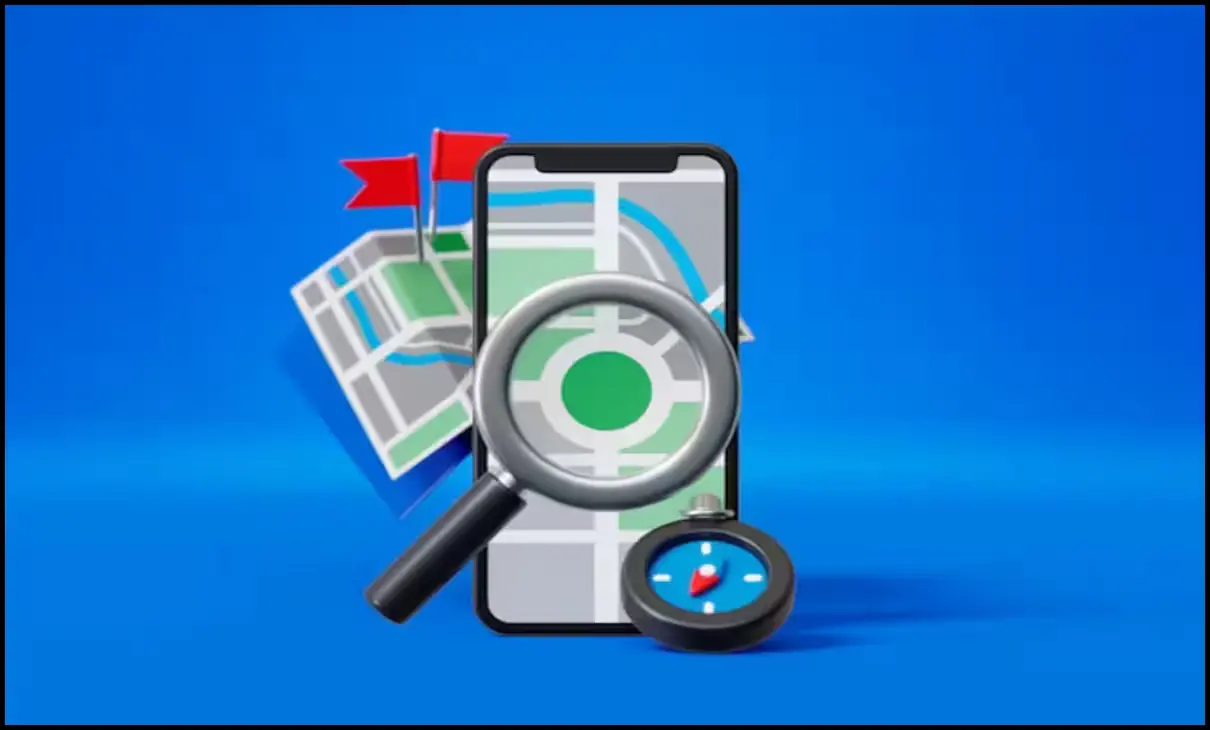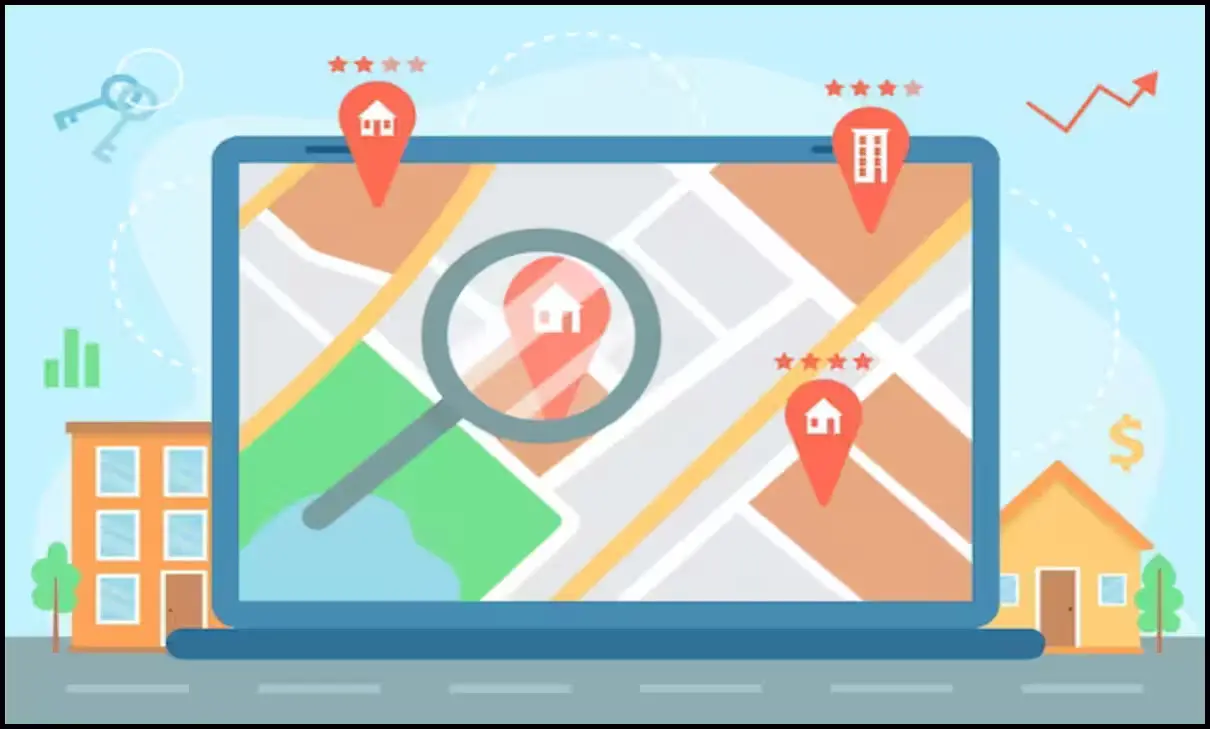How to rank higher on google local services, Google Local Services is an essential platform for businesses to gain visibility and attract local customers. With millions of people relying on online search to find products and services in their area, ranking higher on Google Local Services can significantly impact a business's success.
By understanding the basics of Google Local Services and implementing effective strategies, businesses can increase their chances of appearing at the top of relevant search results. This article will provide valuable insights on how to optimize your Google My Business listing, build a strong online reputation, employ local SEO strategies, utilize online citations and directories, as well as monitor and analyze performance.
Optimizing your Google My Business listing is the first step towards How to rank higher on google local services. This involves claiming and verifying your listing, as well as optimizing your business information and categories. By providing accurate and comprehensive details, you increase your chances of being matched with relevant local searches.
Building a strong online reputation is crucial for businesses on Google Local Services. Encouraging customers to leave reviews and responding to them demonstrates your commitment to customer satisfaction. Positive reviews enhance trust and credibility, which can attract more customers to your business.
Implementing local SEO strategies, such as optimizing your website for local search and utilizing local keywords, helps Google understand the relevance of your business to local searches. By targeting specific geographical locations, you increase your visibility to potential customers in those areas.

Submitting your business to online directories and ensuring consistent and accurate NAP information (Name, Address, Phone number) can improve your online visibility and credibility. It is essential to monitor your local search rankings and website traffic regularly to gauge the effectiveness of your optimization efforts. Utilizing tools like Google Analytics and Google Search Console can provide deeper insights into your website's performance and user behavior.
In conclusion, How to rank higher on google local services is vital for businesses to attract local customers. By implementing the strategies outlined in this article and staying up-to-date with Google algorithm changes, businesses can improve their visibility, credibility, and ultimately achieve success on Google Local Services.
Why ranking higher on Google Local Services is important
Ranking higher on Google Local Services is of utmost importance for businesses looking to attract local customers. With millions of people relying on online search to find products and services in their area, appearing at the top of relevant search results can significantly impact a business's success.
When a business ranks higher on Google Local Services, it gains increased visibility and credibility. People tend to trust businesses that appear at the top of search results, as they are often seen as more reputable and reliable. This can lead to more clicks and visits to the business's website or physical location.
Furthermore, How to rank higher on google local services can result in more customer engagement and conversions. When potential customers see a business at the top of search results, they are more likely to click on it, visit the business's website, and ultimately make a purchase or contact the business. This can lead to higher sales and revenue for the business.
Additionally, How to rank higher on google local services allows businesses to stay ahead of their competition. With multiple businesses vying for the attention of local customers, being able to secure a top spot in search results can give a business a competitive edge.
Overall, How to rank higher on google local services is crucial for businesses to attract local customers, increase visibility and credibility, and generate more engagement and conversions. By implementing effective strategies and staying up-to-date with Google algorithm changes, businesses can achieve long-term success on Google Local Services.
Understanding the basics of How to rank higher on Google Local Services
How to rank higher on google local services, google local services is a platform provided by Google that helps businesses in local service industries increase their visibility and attract local customers. It is specifically designed for businesses such as plumbers, electricians, locksmiths, and HVAC technicians, among others.
The platform functions as a directory where users can search for specific local services and find service providers in their area. When a user searches for a relevant service, Google displays a list of businesses that are verified and approved by Google. These businesses appear at the top of the search results, accompanied by a green checkmark badge indicating their authenticity.
To be listed on Google Local Services, businesses must go through a verification process, ensuring that they meet certain criteria and have proper licensing and insurance. This process helps to establish trust and credibility for the businesses listed.
When a user clicks on a listing, they are taken to a business profile that includes important information such as the business's address, phone number, reviews, and ratings. Users can also contact the business directly from the profile.
Google Local Services operates on a pay-per-lead model, which means that businesses only pay when they receive a direct lead, such as a phone call from a potential customer. This system allows businesses to track the effectiveness of their advertising efforts and ensures that they are only charged for actual customer interactions.
Overall, understanding the basics of Google Local Services is essential for businesses looking to rank higher in local search results and attract more local customers. By harnessing the power of Google Local Services, businesses can gain increased visibility and build credibility in their local markets.
Optimize your Google My Business Listing

To rank higher on Google Local Services, it is essential to optimize your Google My Business (GMB) listing. This is because Google uses information from your GMB listing to determine your business's relevance and credibility in local searches. Here are some tips to help you optimize your GMB listing:
- Claim and verify your GMB listing: Start by claiming your listing and going through the verification process. This will ensure that you have control over your business information and that Google recognizes your listing as legitimate.
- Optimize your business information and categories: Provide accurate and detailed information about your business, including your business name, address, phone number, and website. Choose relevant categories that accurately describe your services. Use keywords in your business description to help Google understand what your business offers.
- Add photos and videos: Visual content helps to enhance your listing and attract more attention. Include high-quality photos and videos of your business, products, or services. This helps potential customers get a better idea of what you offer and increases their trust in your business.
- Manage and respond to customer reviews: Encourage satisfied customers to leave reviews on your GMB listing. Respond to both positive and negative reviews to show that you value customer feedback. This engagement can improve your online reputation and help you establish trust with potential customers.
By optimizing your GMB listing, you increase the chances of appearing higher in local search results on Google Local Services. Keep your information up to date and regularly monitor and update your listing to stay ahead of the competition.
Claim and verify your Google My Business listing
To start optimizing your Google My Business (GMB) listing, it is crucial to claim and verify your listing. This process ensures that you have control over your business information and that Google recognizes your listing as legitimate.
To claim your GMB listing, search for your business on Google Maps and click on the "Claim this business" option. Alternatively, you can go to the Google My Business website and follow the prompts to claim your listing.
After claiming your listing, you will need to verify it to prove that you are the owner or authorized representative of the business. Google offers several verification options, including receiving a postcard with a verification code in the mail, a phone call, or an email. Follow the instructions provided by Google to complete the verification process.
Claiming and verifying your GMB listing is crucial because it allows you to update and manage your business information, respond to customer reviews, and access important features like insights and analytics. It also helps to establish trust with both Google and potential customers, as verified listings are more likely to appear in local search results.
Remember to keep your listing up to date and regularly check for any changes or updates that may require re-verification. By claiming and verifying your GMB listing, you are laying the foundation for a successful online presence on Google Local Services.
Optimize your business information and categories
To rank higher on Google Local Services, it is crucial to optimize your business information and categories. This ensures that your business is accurately represented and relevant to local searches. Here are some tips to help you optimize your listing:
- Ensure accurate business information: Make sure that your business name, address, and phone number (NAP) are consistent and up to date across all platforms. This helps Google understand your business and improves the chances of appearing in local search results.
- Select relevant categories: Choose the most relevant categories for your business to ensure that it appears in the right search results. Be specific and choose categories that accurately reflect your products or services. For example, if you own a bakery, select "Bakery" instead of a broader category like "Food & Drink."
- Add detailed business information: Provide as much information as possible about your business, including hours of operation, website URL, and a detailed description of your products or services. This helps potential customers find the information they need and boosts your visibility on Google Local Services.
- Utilize additional attributes: Take advantage of additional attributes offered by Google, such as wheelchair accessibility or outdoor seating options. These attributes provide valuable information to potential customers and can improve your visibility in relevant searches.
By optimizing your business information and categories, you increase your chances of ranking higher on Google Local Services. Remember to regularly update your information and review categories to ensure that your listing accurately reflects your business.
Build a Strong Online Reputation
Building a strong online reputation is essential for ranking higher on Google Local Services. Positive reviews from satisfied customers can greatly impact your visibility and credibility. Here are some strategies to help you build a strong online reputation:

Encourage customers to leave reviews: Actively ask your customers to leave reviews on your Google My Business profile. You can do this by sending follow-up emails, displaying review prompts on your website, or even offering incentives for leaving feedback. Positive reviews not only increase your chances of ranking higher but also attract more customers.
Respond to reviews and address customer feedback: Take the time to respond to every review, whether it's positive or negative. Engaging with your customers shows that you care about their experience with your business. Thank customers for positive reviews and address any concerns raised in negative reviews. This demonstrates your commitment to providing excellent service.
Monitor online mentions and social media: Stay on top of what customers are saying about your business beyond Google reviews. Monitor online mentions of your business on social media platforms and review websites. Respond promptly to any comments or reviews to show that you value customer feedback and are actively involved in managing your online reputation.
By building a strong online reputation, you increase your chances of ranking higher on Google Local Services. Positive reviews, engagement with customers, and monitoring your online presence will help establish your business as trustworthy and reliable.
Encourage customers to leave reviews
To build a strong online reputation and increase your chances of ranking higher on Google Local Services, it is important to actively encourage your customers to leave reviews. Positive reviews play a significant role in attracting new customers and establishing credibility for your business. Here are some effective strategies to encourage customers to leave reviews:
- Ask for reviews: Reach out to your customers and ask them to share their experience by leaving a review on your Google My Business profile. You can do this through follow-up emails, personalized thank-you messages, or even by including a review request in your invoices or receipts.
- Make it easy: Provide clear instructions on how customers can leave a review. Include direct links to your Google My Business profile or provide step-by-step instructions on your website. The easier it is for customers, the more likely they are to leave a review.
- Incentivize reviews: Offer incentives to customers for leaving reviews, such as a discount on their next purchase or entry into a giveaway. This can motivate customers to take the time to write a review and increase the likelihood of receiving positive feedback.
- Engage with customers: Respond promptly to the reviews you receive, whether they are positive or negative. Thank customers for their feedback and address any concerns raised in negative reviews. This shows that you value their opinion and are committed to providing excellent service.
Remember, authenticity is key when it comes to reviews. Encourage genuine feedback from your customers, and avoid any practices that may violate Google's policies. By actively encouraging reviews, you can build a strong online reputation and improve your visibility on Google Local Services.
Respond to reviews and address customer feedback
Responding to reviews and addressing customer feedback is an essential part of building a strong online reputation and ranking higher on Google Local Services. It shows potential customers that you value their opinion and are committed to providing excellent service. Here are some tips on how to effectively respond to reviews and address customer feedback:
- Monitor your reviews regularly: Keep an eye on your Google My Business profile and other review platforms to stay updated on customer feedback. Set up email alerts or use online reputation management tools to receive notifications whenever a new review is posted.
- Respond promptly and professionally: When you receive a review, whether positive or negative, respond in a timely manner. Express your gratitude to customers for taking the time to leave a review and address any specific concerns or issues raised. Keep your tone calm and professional, and avoid getting defensive or confrontational.
- Show empathy and offer solutions: For negative reviews, empathize with the customer's experience and offer a resolution to their concerns. Provide contact information or invite them to reach out to discuss the matter further. This demonstrates your commitment to resolving issues and can help rebuild trust with unhappy customers.
- Highlight positive feedback: Don't forget to respond to positive reviews as well. Thank customers for their kind words and reinforce their positive experience with your business. This not only shows appreciation but also encourages other customers to share their positive experiences.
Remember, responding to reviews and addressing customer feedback is a way to showcase your excellent customer service. By being proactive and attentive to customer concerns, you can enhance your reputation and improve your chances of ranking higher on Google Local Services.
Local SEO Strategies
To rank higher on Google Local Services, implementing effective local SEO strategies is crucial. These strategies focus on optimizing your website and online presence to target local customers. Here are some key tactics to consider:
- Optimize your website for local search: Include your location in title tags, meta descriptions, headers, and content. Create location-specific landing pages to target different areas you serve.
- Utilize local keywords and location-based content: Conduct keyword research to identify relevant local keywords. Incorporate these keywords naturally throughout your website content, including blog posts, service pages, and FAQs.
- Claim and optimize your Google My Business listing: Ensure your business name, address, and phone number (NAP) information is accurate and consistent across all online platforms. Add photos, business hours, and descriptions to enhance your profile.
- Get listed in online directories: Submit your business to reputable online directories like Yelp, Yellow Pages, and industry-specific directories. This increases your online visibility and local rankings.
- Obtain local backlinks: Reach out to local businesses, organizations, and influencers to collaborate on guest blogging opportunities or to request backlinks from their websites. These local backlinks signal relevance to search engines.
Remember, consistent implementation of these local SEO strategies, along with ongoing optimization and staying up-to-date with Google algorithm changes, will help your business stand out in local search results and improve your ranking on Google Local Services.

Optimize your website for local search
To improve your ranking on Google Local Services, it is essential to optimize your website for local search. This involves implementing strategies that help search engines understand the location of your business and the areas you serve. Here are some key tactics to consider:
Include your location in title tags, meta descriptions, headers, and content: By incorporating your location throughout your website, search engines can easily identify the geographical relevance of your business. This will increase the likelihood of your website appearing in local search results.
Create location-specific landing pages: If your business serves multiple areas, it is beneficial to create separate landing pages for each location. These pages should have unique content that is tailored to the specific needs and interests of customers in that area. This will enhance your website's relevance and visibility for local searches.
Optimize your contact page: Your contact page is an important element of your website in terms of local SEO. Ensure that your business name, address, and phone number (NAP) are prominently displayed and consistent with the information on your Google My Business listing and other online directories.
Integrate Google Maps: Including a Google Maps embed on your website will not only make it easier for customers to find your business but also signals to search engines that you have a physical location in the area.
By optimizing your website for local search, you increase the likelihood of attracting local customers and improving your ranking on Google Local Services. Remember to regularly monitor and update your website for ongoing optimization and to stay ahead of any changes in Google's algorithm.
Utilize local keywords and location-based content
Utilizing local keywords and location-based content is crucial for improving your ranking on Google Local Services. By incorporating these strategies, you increase the relevance of your website for users conducting local searches in your area. Here are some tips to effectively utilize local keywords and location-based content:
- Conduct keyword research: Identify the keywords that are commonly used by people searching for local businesses in your industry. Include these keywords naturally in your website content, including blog posts, service pages, and meta tags.
- Include location-specific terms: Incorporate the names of cities, towns, neighborhoods, and landmarks relevant to your business in your content. This signals to search engines that your business is relevant to local searches in those areas.
- Optimize title tags and headings: Include your target location in your title tags and headings. This makes it easier for search engines to understand the geographical relevance of your website.
- Create location-specific landing pages: As mentioned earlier, creating separate landing pages for each location you serve can greatly benefit your local SEO efforts. Ensure that each page contains unique content tailored to the specific needs and interests of customers in that area.
- Provide localized information: Include information on local events, attractions, and community involvement on your website. This demonstrates your connection to the local area and helps build trust with potential customers.
By implementing these strategies, you enhance your website's visibility and relevance for local searches, increasing your chances of ranking higher on Google Local Services.
Online Citations and Directories
Online citations and directories are essential for improving your visibility and credibility on Google Local Services. These directories are online platforms where businesses can list their information, such as name, address, phone number, and website URL. Here are some ways to utilize online citations and directories effectively:
- Submit your business to popular directories: Identify reputable online directories that are relevant to your industry and location. Some well-known directories include Google My Business, Yelp, Yellow Pages, and Bing Places. Ensure that your business information is accurate and consistent across all directories.
- Optimize your listings: Take advantage of the features provided by each directory to maximize your visibility. This includes adding photos, business hours, and descriptions that highlight your products or services. Use relevant keywords in your listing to increase your chances of appearing in local searches.
- Seek niche-specific directories: Look for directories that cater to your specific industry or niche. These directories may have a smaller audience but can provide highly targeted leads and customers.
- Monitor and update your citations: Regularly check your business listings on directories to ensure that they contain accurate and up-to-date information. Inaccurate or inconsistent citations can harm your local search rankings and confuse potential customers.

By utilizing online citations and directories effectively, you increase your online presence, boost your credibility, and improve your chances of ranking higher on Google Local Services.
Submit your business to online directories
Submitting your business to online directories is a crucial step in improving your visibility and credibility on Google Local Services. By listing your business in reputable directories, you increase the chances of being discovered by potential customers who are actively searching for products or services in your area. Here are some key points to keep in mind when submitting your business to online directories:
- Choose relevant directories: Identify popular directories that are relevant to your industry and location. Some examples include Google My Business, Yelp, Yellow Pages, and Bing Places. This ensures that your business information reaches a wide audience.
- Provide accurate information: When submitting your business, make sure to provide accurate and consistent information, including the business name, address, phone number (NAP), and website URL. Inconsistencies or inaccuracies can confuse potential customers and harm your local search rankings.
- Optimize your listing: Take advantage of the features provided by each directory to optimize your listing. This includes adding photos, business hours, and a compelling description that highlights your unique selling points. Additionally, using relevant keywords in your listing can increase your chances of appearing in local searches.
- Monitor and update your citations: Regularly check your business listings on directories to ensure that the information is up to date. Changes in your business, such as address or phone number, should be promptly updated to avoid any confusion.
By submitting your business to online directories, you increase your online presence, reach a wider audience, and improve your chances of ranking higher on Google Local Services.
Ensure consistent and accurate NAP (Name, Address, Phone number) information
To rank higher on Google Local Services, it is vital to ensure consistent and accurate NAP (Name, Address, Phone number) information. This information should be the same across all online directories and listings. Here are a few reasons why this is important:
- Improved credibility: Consistent NAP information helps establish trust with both potential customers and search engines. When the information is consistent and accurate, it shows that your business is reliable and legitimate.
- Enhanced local search rankings: Search engines like Google rely on NAP information to determine the relevance and credibility of a business. Inconsistent or inaccurate NAP data can confuse search engines and affect your local search rankings negatively.
- Avoid customer confusion: Providing consistent NAP information ensures that customers can easily find and contact your business. Inaccurate or outdated information can lead to frustrated customers and missed business opportunities.
To maintain consistent and accurate NAP information, follow these practices:
- Regularly update your business information on all online directories.
- Ensure that your NAP information matches the details on your website.
- Double-check the formatting, abbreviations, and spelling of your NAP information to avoid discrepancies.
- Promptly update your NAP information when there are changes to your business, such as a new address or phone number.
By maintaining consistent and accurate NAP information, you increase your chances of ranking higher on Google Local Services and providing a seamless experience for potential customers.
Monitor and Analyze Performance
To ensure ongoing success on Google Local Services, it is crucial to monitor and analyze the performance of your business. This allows you to track your local search rankings, website traffic, and customer engagement. By regularly reviewing this data, you can identify areas for improvement and make informed decisions for optimization. Here are a few key steps to monitor and analyze performance effectively:
- Track local search rankings and website traffic: Use tools such as Google My Business Insights and third-party SEO platforms to monitor your local search rankings and website traffic. Keep an eye on the keywords that are driving traffic to your website and identify any changes in your rankings.
- Use Google Analytics and Google Search Console for insights: Integrate Google Analytics and Google Search Console with your website to gain valuable insights. Analyze metrics such as click-through rates, bounce rates, and conversion rates to understand the effectiveness of your online presence.
- Monitor customer reviews and engagement: Regularly check customer reviews and engagement metrics on platforms like Google My Business, social media, and review websites. Pay attention to both positive and negative reviews and respond promptly to address any customer concerns.
- Set goals and benchmarks: Establish specific goals and benchmarks for your performance metrics. This will help you gauge the success of your optimization efforts and make data-driven decisions to improve your Google Local Services ranking.
By monitoring and analyzing your performance, you can stay ahead of the competition and make informed decisions to improve your ranking on Google Local Services. Ongoing optimization and staying up-to-date with Google algorithm changes are key to maintaining success in the long run.
Track local search rankings and website traffic
One crucial step in optimizing your performance on Google Local Services is to track your local search rankings and website traffic. By monitoring these metrics, you can gain valuable insights into the visibility of your business and the effectiveness of your online presence. Here are some key strategies to help you track and analyze local search rankings and website traffic effectively:
- Use tools like Google My Business Insights and third-party SEO platforms to monitor your local search rankings. Keep a close eye on the keywords that are driving traffic to your website and identify any changes in your rankings over time. This data can help you understand which keywords are performing well and which may need further optimization.
- Integrate Google Analytics and Google Search Console with your website. These tools provide valuable data on website traffic, including the number of visits, unique visitors, page views, and average time on site. Analyze metrics such as click-through rates, bounce rates, and conversion rates to understand the effectiveness of your online presence and identify areas for improvement.
- Set up goal tracking in Google Analytics to measure specific actions that are important to your business, such as form submissions or online purchases. This will help you gauge the success of your optimization efforts and identify areas where you may need to make adjustments.
By consistently monitoring and analyzing your local search rankings and website traffic, you can identify trends, make data-driven decisions, and continuously optimize your business to rank higher on Google Local Services.
Use Google Analytics and Google Search Console for insights
To gain deeper insight into the performance of your website and local search rankings, it is crucial to utilize tools like Google Analytics and Google Search Console. These platforms provide valuable data and analytics that can help you understand how users are interacting with your website and track your website's visibility in search results.
Google Analytics offers a wide range of metrics to analyze website performance, such as the number of visits, unique visitors, page views, and average time on site. You can also track important metrics like bounce rate, which indicates how many visitors leave your website without taking any action. By monitoring these metrics, you can identify areas for improvement and make data-driven decisions to optimize your online presence.
In addition, Google Search Console provides insights specifically related to your website's search performance. It offers data on the keywords that are driving traffic to your website, the number of impressions your website receives in search results, and the click-through rates for your pages. This information can help you gauge the effectiveness of your optimization efforts and adjust your strategies accordingly.
By regularly monitoring and analyzing the data from Google Analytics and Google Search Console, you can identify trends, spot potential issues, and make informed decisions to improve your local search rankings and website performance. Use these insights to continuously optimize your business and stay ahead in the competitive world of Google Local Services.
Conclusion
In conclusion, ranking higher on Google Local Services is crucial for business success in today's digital landscape. By implementing the strategies outlined in this article, businesses can improve their visibility in local search results and attract more customers.
Optimizing your Google My Business listing is a fundamental step towards higher rankings. Claiming and verifying your listing, optimizing your business information, and selecting relevant categories all contribute to improved visibility.
Building a strong online reputation is also essential for ranking higher. Encouraging customers to leave reviews and responding to feedback demonstrates credibility and trustworthiness to potential customers.
Leveraging local SEO strategies, such as optimizing your website for local search and using location-based content, further enhances your chances of ranking higher.
Submitting your business to online directories and ensuring consistent NAP information help Google understand your business's location and improve your local search rankings.
Monitoring and analyzing performance through Google Analytics and Google Search Console provides valuable insights that can guide further optimization efforts.
In conclusion, ongoing optimization and staying up-to-date with Google's algorithm changes are key to maintaining high rankings. By implementing these strategies and continuously adapting to the ever-evolving digital landscape, businesses can achieve long-term success on Google Local Services. Start implementing these techniques today and watch your business thrive in local search results.
The importance of ongoing optimization and staying up-to-date with Google algorithm changes
In order to maintain high rankings on Google Local Services, ongoing optimization is crucial. Google frequently updates its search algorithms to deliver the most relevant and useful results to users. As a business, it's important to not only establish a strong online presence but also stay up-to-date with these algorithm changes.
Continuously optimizing your Google My Business listing, website, and content ensures that you remain relevant and competitive in local search results. Regularly monitoring your performance and making adjustments accordingly will help you stay ahead of the competition.
Google algorithm changes can significantly impact your rankings, and staying informed about these changes allows you to adapt and adjust your strategies accordingly. By keeping up with updates and industry trends, you can proactively optimize your online presence to align with Google's ranking factors.
Staying active in the digital marketing community and reading reputable industry publications can help you stay informed about the latest algorithm changes and best practices. Additionally, attending conferences and webinars, and networking with other professionals can provide valuable insights and knowledge.
Adopting a proactive approach to optimization and staying up-to-date with Google algorithm changes ensures that your business remains visible and competitive in local search results. By consistently refining your strategies and adapting to the ever-evolving digital landscape, you can continue to achieve long-term success on Google Local Services.
Tips for continued success on Google Local Services.
To achieve continued success on Google Local Services, it's important to implement the following tips:
- Keep your information up-to-date: Regularly update your Google My Business listing with accurate and current information, including your business hours, contact details, and website link. This ensures that potential customers have access to the most relevant and reliable information.
- Monitor and respond to customer reviews: Actively monitor and respond to customer reviews on your Google My Business listing. Engaging with customers shows that you care about their feedback and can help build trust and credibility.
- Focus on local SEO: Optimize your website for local search by including location-specific keywords in your content, meta tags, and H1 headings. This helps Google understand the relevance of your business to local search queries.
- Leverage online directories: Submit your business to reputable online directories such as Yelp, Yellow Pages, and industry-specific directories. This increases your online visibility and improves your chances of appearing in local search results.
- Stay informed about Google algorithm changes: Stay up-to-date with the latest Google algorithm changes and SEO best practices. Regularly check for updates from Google and industry-leading publications to ensure your strategies align with the latest requirements.
By implementing these tips and consistently optimizing your online presence, you can achieve continued success on Google Local Services and increase your visibility to potential customers in your local area.



You must be logged in to post a comment.